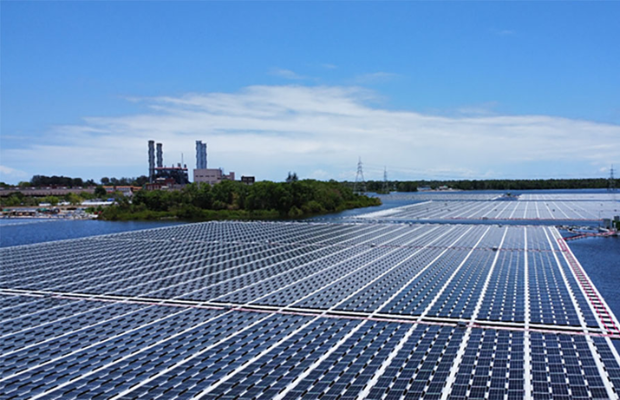Malaysia will build ASEAN’s largest integrated solar photovoltaic (PV) plant, according to the National Energy Transition Roadmap (NETR) launched on Thursday (July 27). In addition, the country will also introduce a mechanism that allows households to earn income by leasing out rooftops for solar panel installations.
Economy Minister Mohd Rafizi Ramli has announced the commencement of Phase 1 of the NETR. As part of Phase 1, a significant milestone has been set with establishing a one-gigawatt (GW) integrated renewable energy (RE) zone, spearheaded by Khazanah Nasional Bhd. This zone will be developed through a joint venture between UEM Group and Itramas Corp.
The NETR comprises 10 flagship catalyst initiatives designed to create environmentally friendly and economically beneficial profitable ventures, as Rafizi emphasized. These flagship projects are projected to attract total investments of over RM25 billion and generate approximately 23,000 job opportunities. Additionally, they are expected to contribute to a substantial reduction of over 10,000Gg of CO2 equivalent per year, advancing the nation’s sustainability efforts.
The roadmap represents a strategic shift to leverage Malaysia’s existing strengths and capitalize on global megatrends, to transform the country’s economic landscape fundamentally. Rafizi highlighted that this new direction provides Malaysia with a valuable opportunity to secure a strong position in the international and regional contexts.
The government views the ongoing energy transition as more than just an environmental obligation; it sees it as a real opportunity to establish Malaysia’s prominence and influence in the global sphere.
The 10 initiatives include an efficient switch to encourage energy efficiency, RE zone, utility-scale energy storage system, energy security in Sabah, green hydrogen in Sarawak, co-firing of hydrogen and ammonia led by Tenaga Nasional Bhd (TNB) in collaboration with Petroliam Nasional Bhd (Petronas); biomass demand creation; future mobility; future fuel; and carbon capture and storage.
Five large-scale solar parks to be co-developed by TNB
Phase 1 of the National Energy Transition Roadmap (NETR) also encompasses the development of five centralized large-scale solar parks, each with a capacity of 100MW. These solar parks will be co-developed by TNB (Tenaga Nasional Berhad). Additionally, TNB is set to develop 2.5GW of hybrid hydro-floating solar PV projects strategically located at its hydro dams.
During a panel session after the launch, Natural Resources, Environment and Climate Change Minister Nik Nazmi Nik Ahmad emphasized that the NETR strongly emphasizes the economic aspects, driving the transition towards renewable energy.
As part of the household rooftop solar initiative, Economy Minister Rafizi revealed that Sime Darby Property Bhd has committed to installing 4.5MW solar capacity across 450 homes as a starting point. These installations will have a capacity of up to 10kW per house. The government envisions a nationwide proliferation of solar panels on residential rooftops and mosques, halls, and factories.
Currently, the Net Energy Metering Rakyat program requires residential rooftop solar users to make significant capital expenditures. The starting capital expenditure for a 4.5 kW residential rooftop solar system is approximately RM20,000, offsetting only a few hundred ringgit in monthly electricity bills. However, households with larger rooftop sizes can install even higher capacity systems. Excess electricity generated by these installations can be kept as credit and used to offset future consumption or bills in other properties owned by the consumer. However, current guidelines allow for the rollover of these credits for just one year.
The new government has recently introduced a series of policy relaxations to boost demand and supply in the renewable energy sector. It includes lifting the ban on renewable energy exports and increasing the individual and total quota for solar rooftop installations and large-scale projects. These measures aim to accelerate the country’s transition to renewable energy sources.
Phase 2 focuses on the national energy mix and emission reduction targets
Phase 2 of the National Energy Transition Roadmap (NETR) will centre on key objectives, including establishing a low-carbon pathway, defining the national energy mix, and setting emission reduction targets. The phase will also address the necessary enablers essential for a smooth and effective energy transition.
In tandem with these efforts, the government is actively working on the Long-Term Low Emissions Development Strategy (LT-LEDS). This strategy will outline the policies and actions aimed at mitigating greenhouse gas emissions across crucial economic sectors, with a particular focus on the energy sector.

